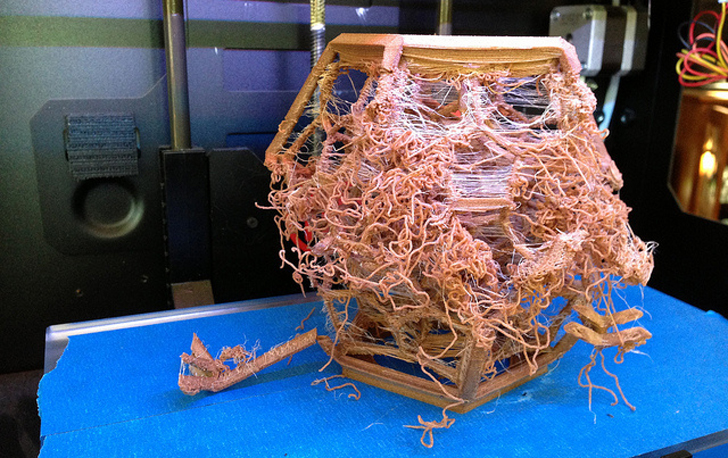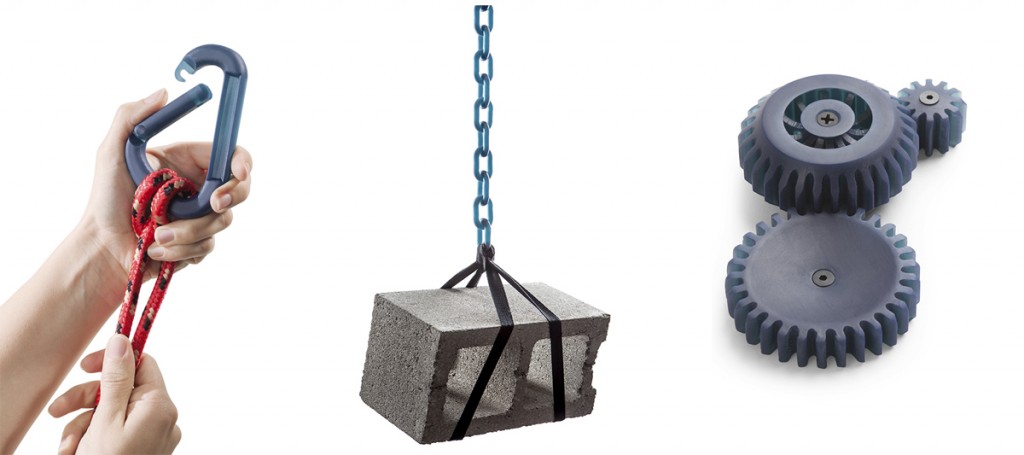The desktop 3D printing market has grown substantially since the open source movement kicked off many low-cost machines a few years ago. Most people will probably assume that, while the pioneering trail-blazer manufacturers that kicked this all off were quality companies, the real winners are going to be the Second Movers that are now gaining a foothold in the market. Given the huge number of desktop 3D printers currently on the market, who will these Second Movers be? This is a question that’s relevant to anyone purchasing a 3D printer, as well as for manufacturers, and those looking to retail 3D printers.
Finding a quality 3D printer
When looking for desktop 3D printers, whether as a customer or a retailer, you will want to know that the 3D printer is reliable, represents quality, and is well built. Look for reviews, scour the blogs, Google it ,and then search the 3D Hubs forums to ensure that you are making the right choice. But, is that enough?
Not quite.

The best looking 3D printer could end up being less valuable than a paperweight, if it does not incorporate well-designed components or lacks quality support. Consider products where you have a good feel for the competency of the manufacturing and support team behind it – quality product, quality support, and continual innovation.
The pace at which new entrants are getting into the desktop 3D printer market on, at least, a weekly basis is still frantic. The direct effect of this on the market is that doubt and confusion are rampant. For even those that are familiar with the 3D printing industry, the decision of which printer to purchase and when continues to be a complex one.
What to consider when purchasing a 3D printer – choose a Second Mover Manufacturer
The first thing to consider is your intended use of the machine. If you are a product designer, small manufacturer, inventor, or offer prototyping services, just do your homework and purchase one now because the marketplace is continually evolving. If you are thinking of waiting for the best fit to arrive, you may be waiting forever. There are a number of great companies with well designed products that are already on the market and you would be well served choosing a 3D printer from one of these manufacturers.
Do you wait a week? Does one buy a well-built machine with a toy-like build volume or go large? Can it be purchased now or is there a lead time? Will it be suitable for its intended use? Will it print in the material range that one would like? Is it upgradeable? Is the company going to be around 6 months post-purchase?
These are all the things that a buyer now has to consider. We all know first hand that, usually, as soon as you make that large purchase, it is obsolete or something better comes along. No one can time that purchase perfectly. With a 3D printer, at least you know that, essentially, if you have done your homework, you will end up with one that checks off all the correct boxes, and, as long as it is upgradeable, your investment is safe.
What’s the Market Really Like?
With well over 200 manufacturers in the desktop 3D printer market (this number is growing much faster than it is shrinking), a majority of them are “me-too” products. Many are essentially using the same technology with varying flavors and design. There are a very select few manufacturers that have a stand-out product that makes their printers better and different from the majority of the clone-like printers on the market.
Manufacturers that aim to address the issues of multi-material capability, ease of use, robust build volume, speed, upgradability, quality support, with a constant desire to improve their product are the ones to watch.
Choose manufacturers that continue to support (through technical support and part upgrades) printers that were built during their first production run – believe it or not, there are a few standout examples that do this.
The State of the Market and the Importance of Manufacturing Market-Ready 3D Printers. Plus, Who’s Buying
As a manufacturer already in the space, you have to think about what market need your product is going to fill. Are you imagining that your new product line of small, medium and large machines are going to end up on every desk in homes, offices and design studios? Think again. The trend we are seeing is that small to midsize manufacturers that started having third party entities 3D print their prototypes for them are now taking the next step of incorporating 3D printing or additive manufacturing into their in-house process. Schools, universities and product designers are adopting 3D printing in a big way, although education is still held back due to budget constraints in states across the country.
Even early adopters want a product that works as advertised, so make sure your hardware is perfect and works in sync with a software solution that has been tested and perfected. If you release it prematurely, you’re going to lose your market lead, reputation, user base and much more. As a would-be manufacturer, you really should not enter the space unless and until you have something that is markedly different and that your intended target demographic is going to want.
Do you have a small machine that you have built as a prototype? If it is, stop. Go back and rethink your model or your target audience. This printer will not end up in every home or on every desktop, but it may be a perfect fit in an education setting. An architect or a designer may not get anything out of this either because of the build volume limitation.

3D printing is going media mainstream; however, recent articles have referred to some real-life projects showcasing the practical applications of the technology as “stunts”. They are not stunts, nor are they hype – they are necessary and important tools in educating the general public about the capabilities of the technology.
While it is not likely that every home is going to have one and upgrade every Christmas, businesses that “Make” things are starting to and must continue to get on board, because of the incredible value 3D printing provides to the design and iterative process. Take a step back and look at who is buying: designers, architects, schools, libraries, engineering and design firms, to name a few. They want machines that are easy to use, possibly fast, precise and that can take on large projects.
Caveat Emptor Reseller
Repeat after me – a 3D printer does not sell itself and this is not the next “Gold Rush” (or “Plastic Rush”). It’s not enough that it is a technology that has a high “wow-factor” and that, at any public event, Maker Faire, etc. onlookers are drawn to booths to see 3D printers in action. It’s also not enough that everyone you speak with has an interest in the technology.
So, whatever you do, do not buy ten or dozens or more units, get a retail space or a warehouse and expect that the machines will sell with one tweet a day. It’s a great and easy sales cycle when your intended client can see a demo that is relevant to them. You have to make those calls and be at those events where you’ll get the exposure you need and you have to have patience.
This sales pipeline isn’t going to build itself and it most definitely will not happen overnight, over a month or over a year. Are you able to stick it out for the long haul? Are you well capitalized? Remember: on the desktop side of the market, there are two certainties – change is constant and there is price erosion – already.
Who is going to win?
Businesses, manufacturers, designers, inventors, teachers, schools, universities and students that have embraced the technology are winning already.
As a manufacturer, as long as you hold innovation as your core driving principle while at the same time building out your team with great people that understand not only the product side but also distribution, marketing, sales, support and customer service – you are going to win. Most importantly, you have to have mature leadership that is nimble and incorporates constructive feedback into their teams, the way they do business and their products. You also need investors to help you get through the coming shakeout.
We’ve had some great companies come out of crowdfunding platform- based launches. A majority of the others were great for end users (inexpensive machines available in “early bird” tiers). Will they all establish viable businesses? Not likely. Will all of them deliver on the promised products? Again, probably unlikely.
This article is not meant to be a “winner takes all” endorsement of Second Mover manufacturers – we can point out a number of manufacturers that have richly priced printers that do not deliver as advertised, but would instead recommend that you do your homework.



